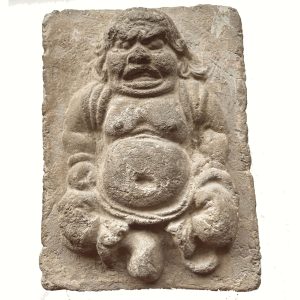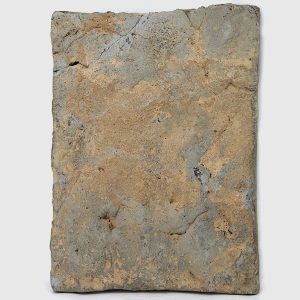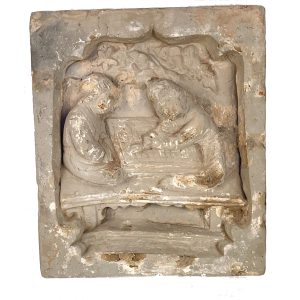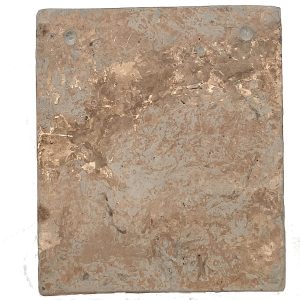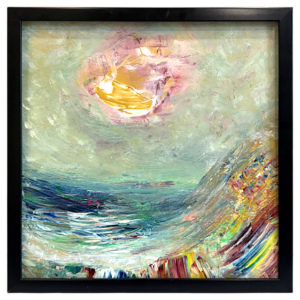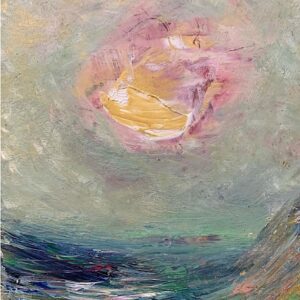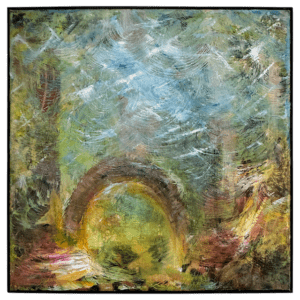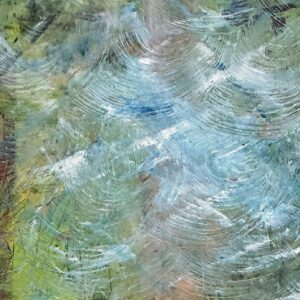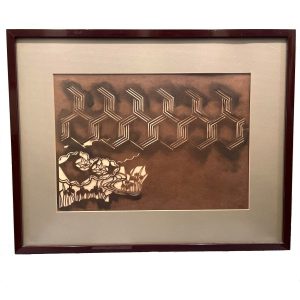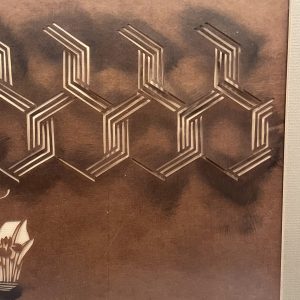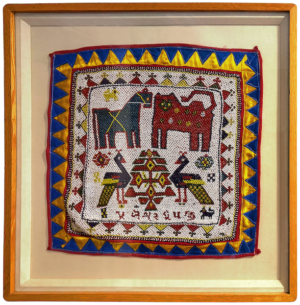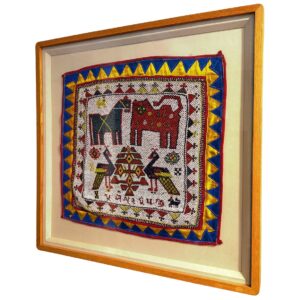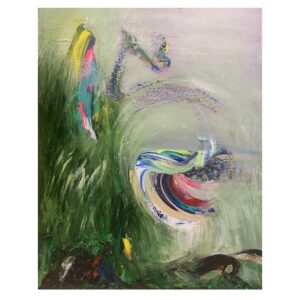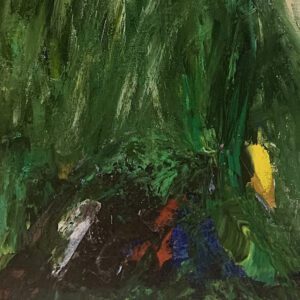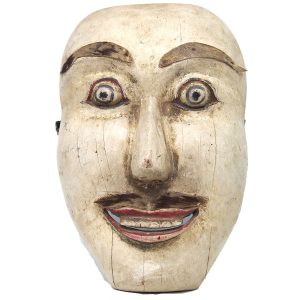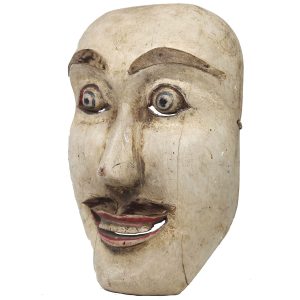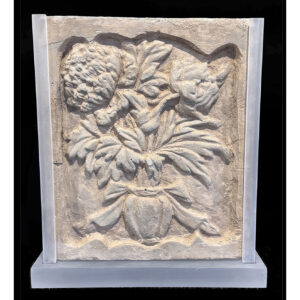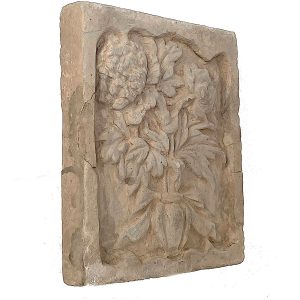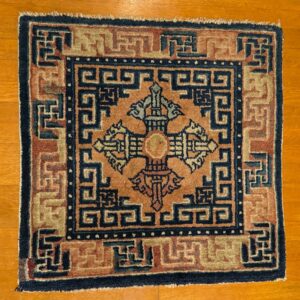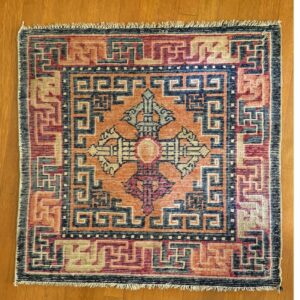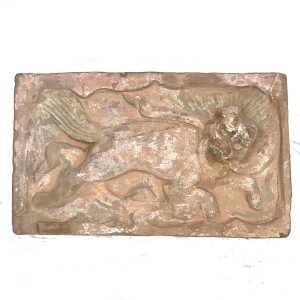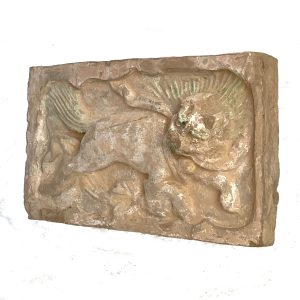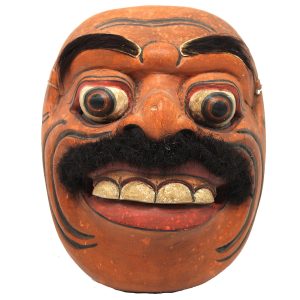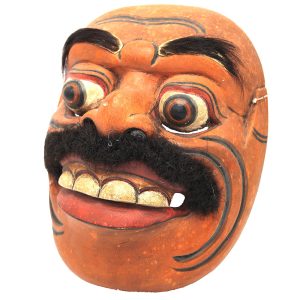Showing 13–24 of 49 results
-
Sale!


$475.00 Original price was: $475.00.$325.00Current price is: $325.00.
Ht: 6.875″ W: 5.25” D: 2.25 | FREE SHIPPING WITHIN CONTINENTAL U.S.!
This fascinating thick Song pottery brick is a low-fired depiction of a dwarf foreigner with a rotund belly, a large head and nose, an open mouth and abnormal features. The Chinese believed dwarfs could ward off evil spirits and sickness, attract peace and blessings (fu) and were very wise. Images of dwarfs became so popular, some were produced in numbers.
-
Sale!


$495.00 Original price was: $495.00.$395.00Current price is: $395.00.
H: 11” W: 9.5” \ D: 2” | FREE SHIPPING WITHIN CONTINENTAL U.S.
As part of the The Song dynasty cultural expansion, government and public buildings and tombs were built with interior walls decorated with earthenware unglazed mold-made brick tiles. This fanciful vibrant tile with a scalloped frame portrays two people playing a board game called wéiqí which originated in China over 2500 years ago. It is the world’s oldest and most complex board game still played.
-


$750.00
H: 13″ W: 13″ | CALL 213-568-3030 OR EMAIL [email protected] FOR SHIPPING
Framed Acrylic on Archival Board
This glorious Lark painting received a Gold Award in the USA Group Show at the Metropolitan Museum of Art in Tokyo in 2023.
-


$1,850.00
H: 24.5″ W: 24.5″ | CALL 213-568-3030 OR EMAIL [email protected] FOR SHIPPING
Oil and Mixed Media on Canvas
This painting transports us to the innocence and fairytale playground of childhood in all of us, when our souls were open to the possibility of transformation and miracles.
-
Sale!


$225.00 Original price was: $225.00.$195.00Current price is: $195.00.
H: 18″ W: 22.5″ | : | CALL 213-568-3030 OR EMAIL [email protected] FOR SHIPPING
Katagami are used to decorate Japanese textiles. Six hexagonal shapes with intertwining triple-line forms on top and a single line closing its shape create a dynamic decorative scheme. This beautiful design includes symbolic hexagons, trees and seven-point stars. Well framed with mat board and non-reflective glass.
-


$495.00
An Indian toran or bandhanwar is a beadwork tapestry traditionally placed at home doorways and thresholds and symbolize warmth, positivity, and protection. Their origin lies in ancient Hindu religious texts which are part of the Vedas, the vast genre of Indian literature that includes myths, legends, traditional philosophy, lore and rituals (circa 1500-1000 BC). They…
-


$1,900.00
H: 36″ W: 32″ | CALL 213-568-3030 OR EMAIL [email protected] FOR SHIPPING
Acrylic on Canvas
This large painting is an important work from Lark’s Portal Series and was exhibited in her solo show “Portals” in Art2Art gallery and also during the West Hollywood Festival of European Culture in Southern California.
-


$395.00
Balinese carvings and masks are ethnic folk art and a blend of Hinduism and its initial animism. Most masks made in Bali are from pulai wood that rarely cracks and is easier to carve. As it is not native to Lombok, carvers there use a variety of woods some of which were dense with others light….
-


$995.00
H: 11” W: 9.5” D: 1.65” | FREE SHIPPING
This earthenware brick tile bordered with a deep scalloped frame depicts a vase with a bouquet of propitious flowers: a chrysanthemum and a peony wrapped with an elegant ribbon. Tiles like this were made to decorate the large numbers of buildings created during the prosperous Song dynasty and to adorn tombs. This elegant brick is in good condition for its age with expected chips and cracks, some restoration of background and a re-glued frame break on each side. It has earth adherents from its burial in a tomb.
-


$375.00
This rug was made in China for Vajrayana/Tibetan Buddhists who were taught this form of Buddhism by Tibetan monks invited there to teach Tibetan Buddhism. Rugs like this were made both for domestic Chinese use and for export to Tibet. Made from wool and natural dyes, this fringed small square has a cotton foundation and…
-
Sale!


$485.00 Original price was: $485.00.$395.00Current price is: $395.00.
The Song dynasty (960–1279) is considered the most culturally brilliant era in later imperial Chinese history. A massive expansion during this dynasty produced government, public and religious buildings and tombs with walls decorated with earthenware unglazed mold-made brick tiles. Some were purely decorative and others were wishes for happiness and comfort in the deceased’s afterlife…
-
Sale!


$110.00 Original price was: $110.00.$0.00Current price is: $0.00.
H: 7.625″ W: 6.125″ D: 3.375″ | FREE SHIPPING within continental u.s.!
Most jauk keras (strong, scary) masks of a giant are often red or orange to reinforce a volatile dance with jerky movements. This jauk manis (good, sweet) mask dance is a more controlled, regulated and enacted with more calm and human movements. Personally collected in Bali in the 1970s, it is in excellent condition with expected minor scratches and paint losses.
End of content
End of content

